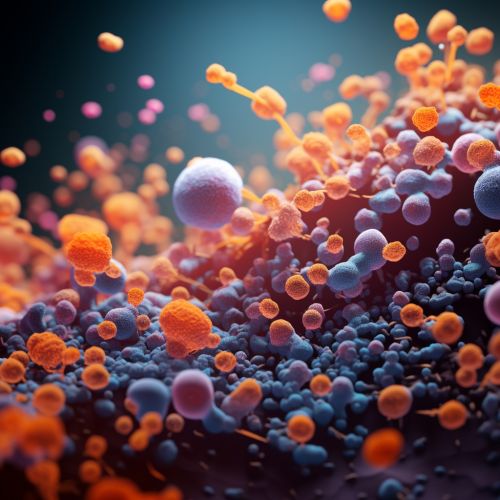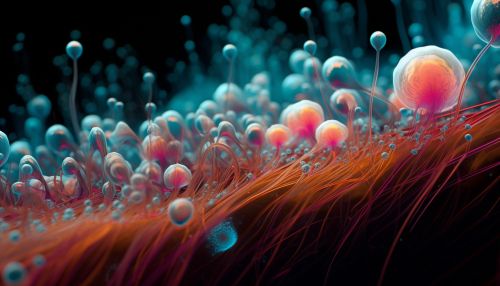Bacterial chemotaxis
Introduction
Bacterial chemotaxis refers to the movement of bacteria in response to chemical stimuli. This phenomenon is a key survival mechanism for bacteria, allowing them to move towards favorable environments and away from harmful ones. The process involves a complex network of signaling pathways and molecular machinery, which enable the bacteria to sense and respond to their environment.


Mechanisms of Bacterial Chemotaxis
Bacteria use a variety of mechanisms to detect and respond to chemical gradients in their environment. The most well-studied of these is the chemotaxis system in E. coli, which serves as a model for understanding bacterial chemotaxis in general.
Chemoreceptors
Chemoreceptors, also known as methyl-accepting chemotaxis proteins (MCPs), are the primary sensors in bacterial chemotaxis. These proteins are embedded in the bacterial cell membrane and bind to specific chemicals in the environment. The binding of a chemical to a chemoreceptor triggers a signal transduction pathway that leads to changes in the direction of bacterial movement.
Signal Transduction
The signal transduction pathway in bacterial chemotaxis involves a series of protein-protein interactions and phosphorylation events. When a chemoreceptor binds to a chemical, it undergoes a conformational change that activates the histidine kinase CheA. Activated CheA then phosphorylates the response regulator CheY, which interacts with the flagellar motor to change the direction of bacterial movement.
Flagellar Motor
The flagellar motor is the molecular machinery that propels bacteria through their environment. In E. coli, the flagellar motor can rotate in either a clockwise or counterclockwise direction. The direction of rotation determines whether the bacterium moves in a straight line (run) or changes direction (tumble). The phosphorylated form of CheY interacts with the flagellar motor to increase the probability of a tumble, thereby changing the direction of bacterial movement.
Chemotactic Behavior
The chemotactic behavior of bacteria is characterized by a series of runs and tumbles. In the presence of a chemical gradient, bacteria will bias their movement towards the source of the chemical. This is achieved by extending the duration of runs in the direction of the chemical gradient and shortening the duration of runs in the opposite direction. This biased random walk allows bacteria to move towards favorable environments and away from harmful ones.
Role in Pathogenesis
Bacterial chemotaxis plays a crucial role in the pathogenesis of many bacterial diseases. For example, H. pylori, the bacterium responsible for stomach ulcers and gastric cancer, uses chemotaxis to navigate through the stomach mucus layer and colonize the stomach lining. Similarly, P. aeruginosa, a common cause of hospital-acquired infections, uses chemotaxis to move towards host tissues and establish an infection.
Research and Applications
Research into bacterial chemotaxis has provided valuable insights into the basic principles of signal transduction and cellular behavior. Furthermore, understanding bacterial chemotaxis could lead to the development of new strategies for combating bacterial diseases. For example, disrupting the chemotaxis system could prevent bacteria from reaching their target tissues, thereby inhibiting their ability to cause disease.
